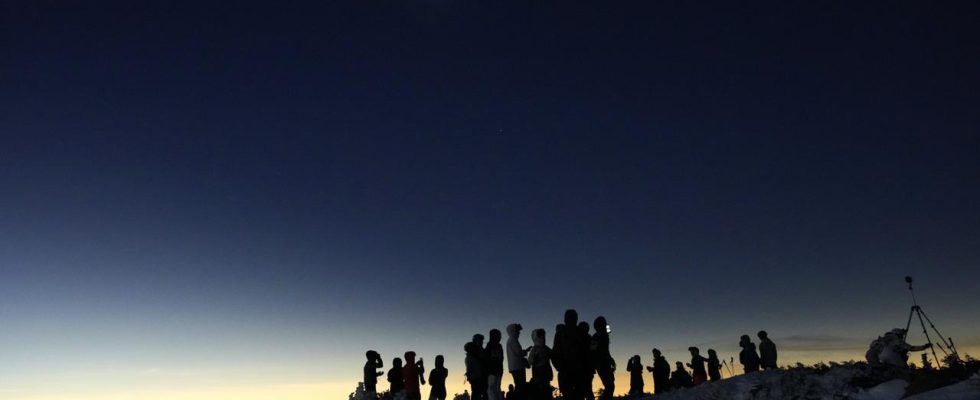Closed schools, fully booked hotels: millions of people in Central and North America prepared for the total solar eclipse. Wherever the spectacle could be seen, many of the onlookers cheered and whistled.
Millions of people from Mexico to the US to Canada witnessed a total solar eclipse. In the middle of the day, the moon passed between the Earth and the sun, leaving a strip about 185 kilometers wide in twilight.
In other areas, at least a partial solar eclipse could be observed – if the weather cooperated. The natural spectacle began on the mostly clear Pacific coast of Mexico and headed for Texas and 14 other US states before reaching the North Atlantic near Newfoundland in Canada after about 6,500 kilometers.
Cheering and amazement for minutes
Clouds partially obscured the view of the celestial spectacle. In Mesquite, east of Dallas, they left at the last moment. Hundreds of people in the city center cheered and whistled. When the moon completely covered the sun, the crowd became even louder. Many took off their solar eclipse glasses to catch an unforgettable glimpse of the so-called corona of the sun, which shone from the edge of the dark disk of the moon. To the right, Venus shone.
View of the total solar eclipse from a mountain near Rangeley, Maine.
“Oh God, it’s so dark,” marveled 14-year-old Aiyana Brown, who watched the eclipse with her grandfather, Mesquite Mayor Daniel Aleman Jr. “I’m a huge science geek, and this is incredible,” she said.
During a total solar eclipse, the moon moves directly in front of the sun and completely obscures it. In the resulting twilight, which lasted up to four minutes and 28 seconds, only the Sun’s outer atmosphere, or corona, is visible.
NASA is also watching
An estimated 44 million people were able to observe the solar eclipse, in cities such as New York and Montreal. There were also countless interested amateur astronomers and onlookers who ensured that hotels, campsites and flights were fully booked to observe the natural spectacle.
Scientists had also been preparing for the event for months. The US space agency NASA examined the solar eclipse using aircraft and balloons, among other things.
The last total solar eclipse was visible from the USA in 2017, from Mexico in 1991 and from Canada in 1979. The next one for the USA and Canada is not announced for 2044, and for Mexico in 2052.
The last time Germany experienced a total solar eclipse was in August 1999.

